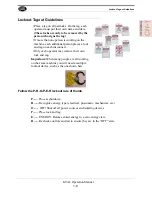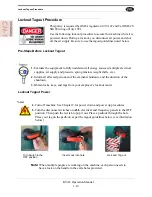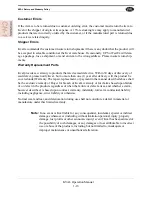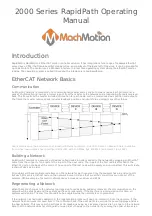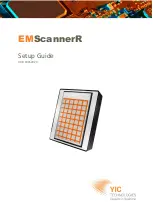
Overview of the Edge-SS System
1-3
KVAL Operation Manual
nected to a solid state motion controller. The computer allows an almost limitless number of
routing patterns to be stored for instantaneous set-up.
The same method is used with other screens for flush bolts, roller catches, “T” strikes, dead bolt
plates and mortise locks. The software also makes it simple to put together combination program-
ming with fill in the blanks for mortising locations so continuous machining can be done. For
example, the router could automatically machine a top manual flush bolt then move down to
machine a dead bolt plate, a “T” strike, then and the bottom manual flush bolt.
The machine tabletop is “L” shaped and consists of inverted caster wheels so doors are easy to
position. The “L” shape allows routing of either rails or stiles by rotating the door. Doorstops are
provided at 4’ intervals. The first stop at the corner of the “L” table is used for both stile and rail
routing depending on door orientation. For opposite swing doors the middle and far end stops are
used for rails and stiles. This makes it easy to machine top and bottom flush bolts and a “T” strike
without turning the door over.
In operation, the operator can enter the details for the next door while the current door is being
processed, so no time is lost between jobs. The screen and switches are used to select door thick-
ness, position of machining and left or right hand machining.
For Example
: a “T” strike pattern called SCHLAGET is specified at 44-1/2”, the operator selects
SCHLAGET as the pattern, enters 44-1/2” and when the next door is clamped in position, the
machine automatically machines the “T” as specified. If the next door gets the same treatment, the
“Start” button can be pressed again to repeat the pattern.
Edge
: Programming has been developed to automatically generate the most common CNC pro-
gramming with graphics screens. For example, one graphic screen shows a drawing of a door
stile with hinge pockets. The operator just fills in blank dimensions for hinge depth, locations,
backset radius and bevel and the computer tells the machine what to do. If the pattern is a stan-
dard, it can be named “Ceco,” for example, and recalled without re-typing dimensions next-time.
Summary of Contents for Edge-SS
Page 4: ...KVAL Edge SS System Operation Manual ...
Page 6: ...KVAL Edge SS System Operation Manual ...
Page 12: ...KVAL Edge SS Manual Table of Contents ...
Page 49: ...About Revisions 2 16 KVAL Manual ...
Page 84: ...Common Terms 2 51 KVAL Manual FIGURE 2 11 Example of a Validation Report ...
Page 147: ...About the Nodes 5 21 KVAL Operation Manual ...
Page 149: ...Index Kval Edge SS clean up 12 inspect 12 ...
Page 150: ......
Page 151: ......





















